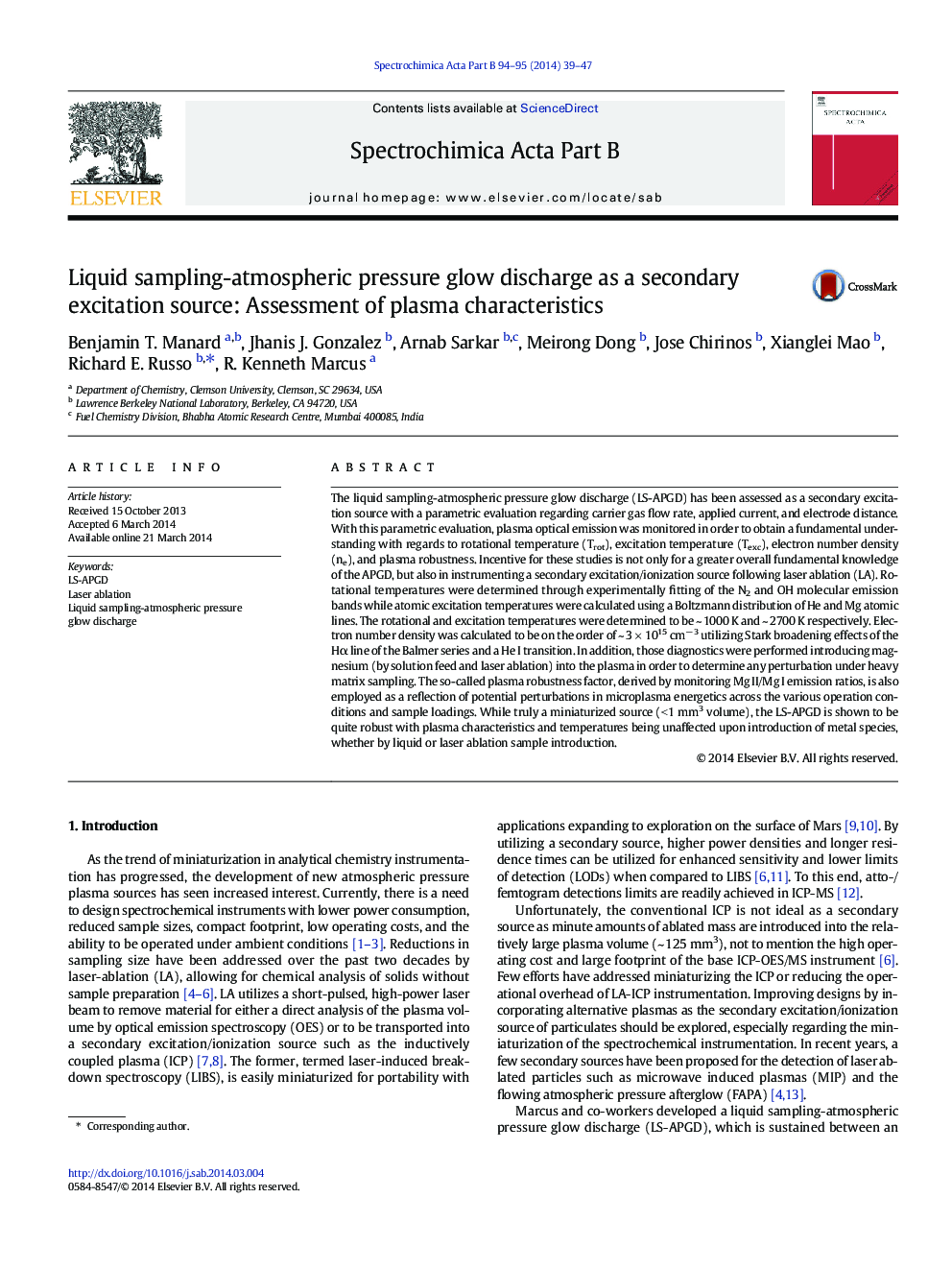| کد مقاله | کد نشریه | سال انتشار | مقاله انگلیسی | نسخه تمام متن |
|---|---|---|---|---|
| 1239690 | 1495707 | 2014 | 9 صفحه PDF | دانلود رایگان |
• Liquid sampling-atmospheric pressure glow discharge (LS-APGD)
• LS-APGD as a secondary excitation source for laser-ablated (LA) particle analysis
• Rotational and excitation temperatures, electron number densities and robustness
• Temperatures are in line with flames and low power ICP and MIP sources
• Electron number densities were on par with typical, analytical ICPs
The liquid sampling-atmospheric pressure glow discharge (LS-APGD) has been assessed as a secondary excitation source with a parametric evaluation regarding carrier gas flow rate, applied current, and electrode distance. With this parametric evaluation, plasma optical emission was monitored in order to obtain a fundamental understanding with regards to rotational temperature (Trot), excitation temperature (Texc), electron number density (ne), and plasma robustness. Incentive for these studies is not only for a greater overall fundamental knowledge of the APGD, but also in instrumenting a secondary excitation/ionization source following laser ablation (LA). Rotational temperatures were determined through experimentally fitting of the N2 and OH molecular emission bands while atomic excitation temperatures were calculated using a Boltzmann distribution of He and Mg atomic lines. The rotational and excitation temperatures were determined to be ~ 1000 K and ~ 2700 K respectively. Electron number density was calculated to be on the order of ~ 3 × 1015 cm− 3 utilizing Stark broadening effects of the Hα line of the Balmer series and a He I transition. In addition, those diagnostics were performed introducing magnesium (by solution feed and laser ablation) into the plasma in order to determine any perturbation under heavy matrix sampling. The so-called plasma robustness factor, derived by monitoring Mg II/Mg I emission ratios, is also employed as a reflection of potential perturbations in microplasma energetics across the various operation conditions and sample loadings. While truly a miniaturized source (< 1 mm3 volume), the LS-APGD is shown to be quite robust with plasma characteristics and temperatures being unaffected upon introduction of metal species, whether by liquid or laser ablation sample introduction.
Journal: Spectrochimica Acta Part B: Atomic Spectroscopy - Volumes 94–95, 1 April–1 May 2014, Pages 39–47
